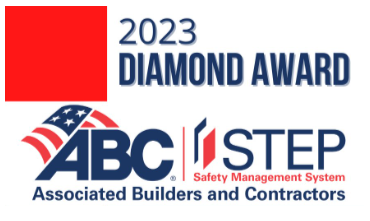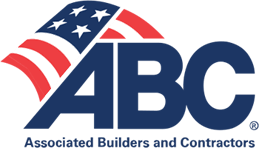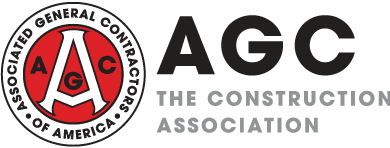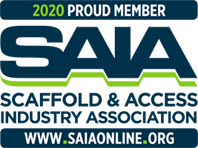Safety is always a top priority when working at tall heights. Scaffolding can present numerous hazards, especially if it isn’t properly put together or if specific safety protocols aren’t followed.
Companies that follow the safety guidelines detailed below should prevent most accidents and injuries resulting from working at certain heights.
Common Scaffolding Hazards
Some of the most common scaffolding hazards include the following:
Scaffold collapses
An incorrectly built scaffold runs a risk of collapse. In addition, carelessness with heavy equipment or materials may cause damage to the supports, overload the scaffold, or otherwise lead to a collapse.
Falling from scaffold
Poor construction without proper guards or failure to use adequate fall arrest equipment could lead to injuries from falls. Typically, any scaffold over ten feet from the ground needs some form of protection from falls.
Struck by falling objects
Items dropped from scaffolds could injure those on lower platforms or the ground. Installing proper toe boards or barricades can prevent injury from falling objects.
Electrocution
Scaffolds built near power lines put workers at risk of electric shock. OSHA regulations require a minimum of ten feet clearance between scaffolds and electrical hazards. If the distance is less than ten feet, the line needs to be shut off.
General Scaffolding Safety Tips
With the most common hazards in mind, we can take a look at the types of safety standards employees and managers should generally follow.
Know local regulations
First off, it’s important to be familiar with local regulations and laws. Each state and city has its own laws governing scaffold safety, and OSHA itself has a set of universal safety rules. Knowing and following these rules is key to preventing serious injury while working on scaffolding systems.
Note potential hazards
Constant vigilance is vital when working at height, and it’s important to inspect the area and equipment for potential hazards. The work area, tools, and scaffolding structure itself all need to be examined at frequent intervals to prevent hazards from going unnoticed.
Also, any time a change in the work area or scaffolding occurs, the structure should be reexamined.
Oversight from a competent person
Any time you build, move, or dismantle a scaffold, you need to have a competent person present to supervise the process. This person should perform daily inspections to check for flaws, hazards, or other issues.
Install proper guards
Guard rails, toe boards, barricades, and other guards can prevent falls or injuries from falling objects. Note that ladders or stairs should also be installed and that rails or poles are not to be used to ascend or descend the structure.
Respect load limits
Scaffolding designs and materials should account for the types of materials and equipment that will be present on the structure. Bringing too much weight onto a given platform can cause it to collapse.
Use consistent parts
When constructing a scaffold, use components that are specifically designed to be compatible. Mixing and matching parts from different manufacturers or those that are built for different loads can compromise the entire structure, leading to a collapse and/or injury.
Scaffolding Safety By Industry
Each industry has unique hazards, and thus specific safety protocols should be followed when using scaffolding in the following areas.
Commercial
Commercial construction scaffolds are used to assist with construction processes, and therefore, heavy materials are typically present.
Tips for commercial construction applications include:
- Always wear personal protective equipment (PPE) in and around work areas.
- Take special care with heavy materials and tools. Get help lifting heavy loads or use hoisting equipment when needed.
- Mind where heavy equipment is placed. Give scaffolding plenty of clearance.
- Clear materials and tools from the scaffolding at the end of each shift.
- Follow all directions from supervisors as well as OSHA regulations.
Industrial
Industrial scaffolds used in manufacturing and maintenance need to follow certain standards. Special safety precautions are also advised.
- Avoid the use of shore or lean-to scaffolds.
- Use proper lockout-tagout procedures when using scaffolding to access equipment.
- Wear PPE at all times.
- Build scaffolds, including decks and platforms, for durability and skid resistance.
Shipyards
Scaffolds used for shipyard staging need to be able to withstand the atmosphere present near water.
- Build scaffolds from materials that will withstand exposure to seawater and the elements.
- Inspect scaffolds regularly to keep them in top condition.
- Take special care with front edge distance.
- Handle heavy materials with caution, since marine hanging staging isn’t usually designed to withstand heavy loads.
Government
Scaffolding used in renovations or construction of government buildings must adhere to high standards of safety.
- Follow OSHA safety standards for scaffolds.
- Always wear adequate PPE at all times on job sites.
- Build scaffolds for the loads they’ll have to bear.
Importance Of Training In Scaffolding Safety
One final tip for scaffolding safety is to make sure everyone is fully trained. Having a qualified person on-site will see to it that personnel are thoroughly trained in scaffolding safety before any work begins.
At Scaffolding Solutions, we pride ourselves on offering the highest quality scaffolding products and superior safety standards. Our team is comprised of fully trained members in varying levels of scaffolding safety. Each of our scaffolds uses high-quality products and adheres to all OSHA safety standards.
With regular training and instruction being performed, plus updates to training every time circumstances change, your employees are at a lower risk of injury.











